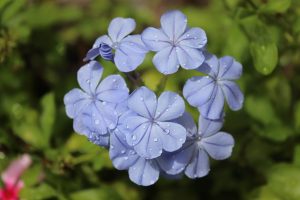Love Irrigation’s Planting Tips
We, at Love Irrigation, want to make sure you have all the knowledge to make sure your planting is successful! Here are some planting tips we think will help out:
•When picking out your plants, make sure your plant’s foliage is healthy and the roots are not coming out of the drain holes in the container.
• Make sure the plants that you choose are right for the area you are planting. Check the tags to see what type of sunlight the plant needs to flourish. You do not want to plant full sun plants in area that only gets 4 hours of sun a day. The benefits of using small plants are that they are less expensive and easier to handle if you are needing to fill out a bed and must purchase multiple plants.
• Consider upgrading your soil quality by using compost. Dig your existing soil out about 11 inches, making sure you are taking out any stones and breaking up soil clots. Add about 6 inches of compost on top and mix it in with existing soil; smooth and level the soil when complete.
• At this time, it would be good to set up a watering system for your plants if you do not already have one. We suggest drip irrigation, but a soaker hose will work as well.
• Before you begin planting, water the plants with a hose while they are still in their original containers.
• Slide the rootball out of the container and gently loosen the plants roots on the sides. Dig a hole that’s about twice the size of the rootball; place the plant in the hole. If you are planting perennials, the top of the plant should sit about 1 inch above the ground once you backfill the hole. This will allow the plant room to settle once it is planted. If you are using annuals, the plants can be flush with ground. If your soil drain wells, you should backfill the holes with that soil. If you are planting in sand or hard clay, mix a compost in while you backfill your holes. Make sure you leave enough room between plants to allow them to grow to their full size. A good way to know how much room to give the plants is by reading the label.
• Once you have planted, covering the bed with 2-3 inches of mulch will help deter weeds and retain moisture but be sure to leave room around the stem of the plant to steer clear of rotting.
• New ornamental plants need a lot of watering immediately after planting. They will also need regular watering throughout the winter and up until they reach maturity (1-2 years)


